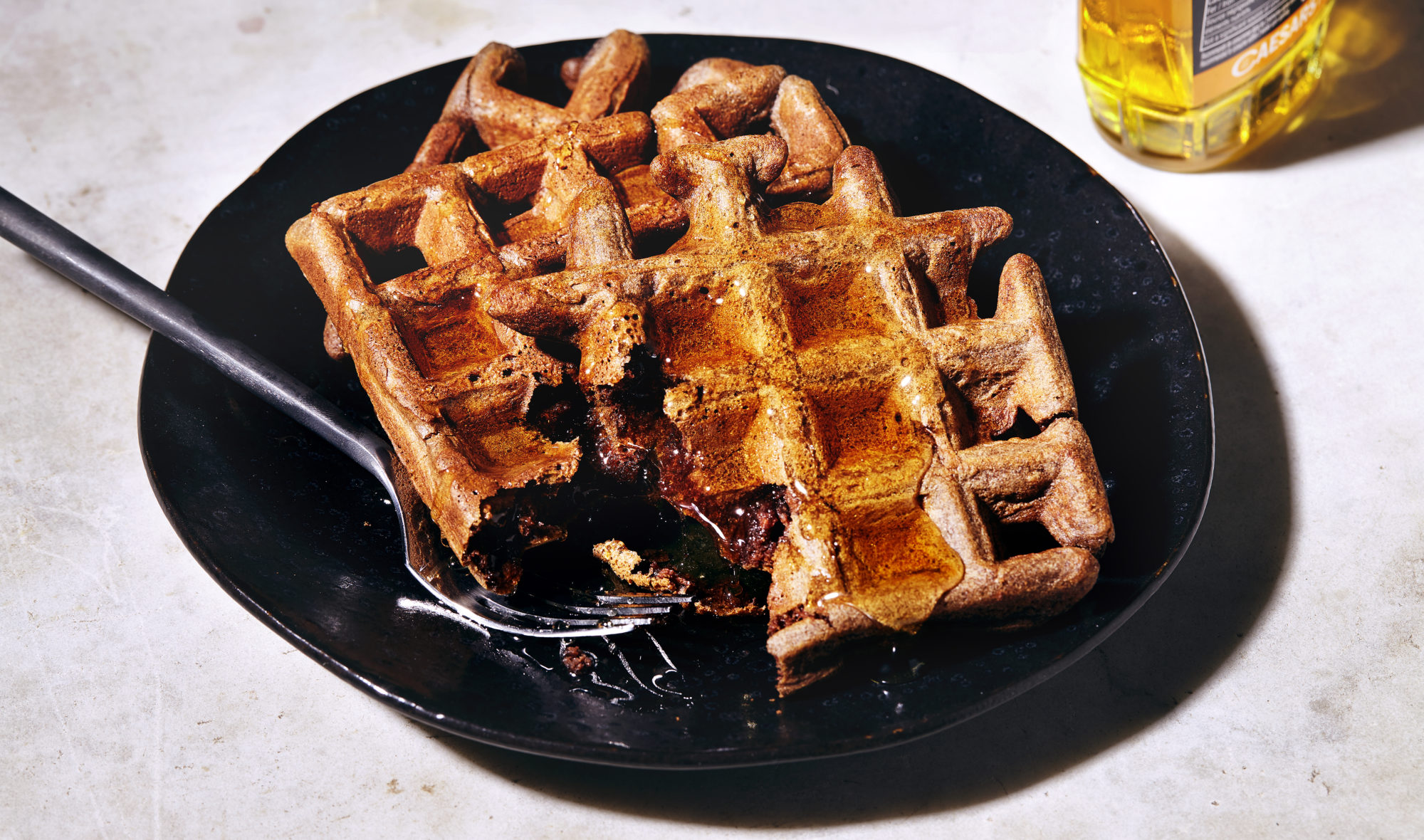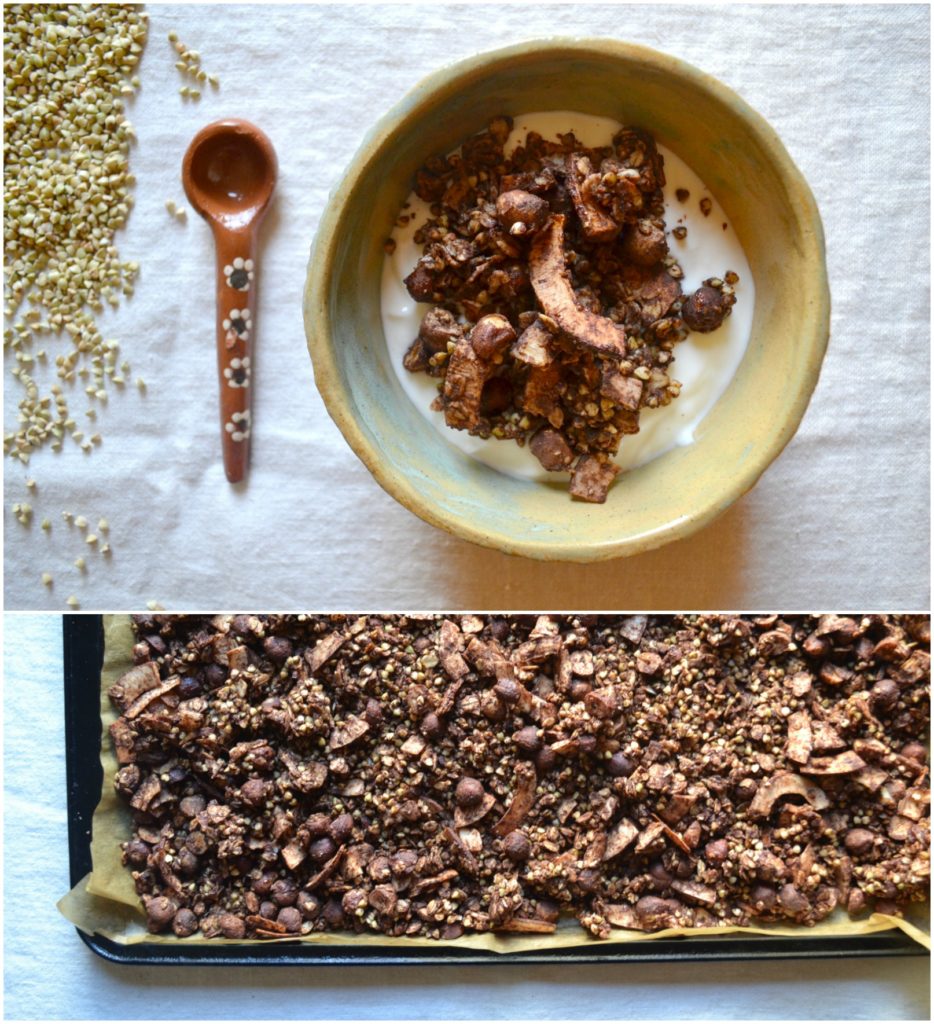
Join PN Level 2 for about $6/day! Plus, FREE Bonus worth $697! (This week only.)

Buckwheat is neither a relative to wheat, nor is it a grain. Although buckwheat is often placed in the “whole grains” category, it is actually a starchy, gluten-free seed. Buckwheat has been a nutritious dietary staple for thousands of years, particularly in the mountainous regions of Asia and parts of Eastern Europe. Today, buckwheat is still popular in these regions and can be found in the form of noodles, porridges, breads, and other baked goods. Although this “pseudograin” is not quite mainstream in North American diets, there is a case to be made for encouraging its popularity: Buckwheat is highly nutritious, being an excellent source of manganese, magnesium, phosphorus, and vitamin B3, and a good source of vitamin B2, vitamin B5, zinc, and iron. Buckwheat, especially in its toasted form (also called “kasha”) is bolder and earthier tasting than the ubiquitous wheat, but c’mon North Americans, you can handle it.
Although it is often classified as such, buckwheat is not a grain. It’s also not related to wheat, which is confusing given its name.
Buckwheat is actually a fruit seed, but because of its high proportion of complex carbohydrates, it is often lumped into the “whole grains” category. For this reason, buckwheat is referred to as a “pseudograin”. In other words, it’s not really a grain, but it’s masquerading as one.
Buckwheat is thought to have been domesticated in Southeast Asia around 6000 BC, where, over centuries, it spread as a crop to other parts of Asia and then to the Middle East and Europe. In Poland and Russia, buckwheat still plays an important role in the traditional diet, being commonly cooked as a porridge or ground into a flour to make bread and other baked goods.
Crepes, noodles, and even pillows also find their common denominator in buckwheat. France is famous for their thin buckwheat crepes, stuffed with either sweet or savory fillings. In Tibet, buckwheat was turned into noodles, which are still a staple in traditional diets of the mountainous regions of Asia where wheat can’t grow. Buckwheat kernels are even used as a stuffing for pillows due to its ability to provide structure and regulate temperature.
As you can see, buckwheat is quite the shape-shifter.
Currently, the world’s current primary cultivator of buckwheat is Russia, with China catching up on its tail.
In its whole form, buckwheat is found either raw or roasted. In its roasted formed, it is commonly referred to as “kasha”.
The buckwheat kernel is small and triangular. Raw buckwheat is pale green in color, and tastes starchy and rather bland, with a slight hint of earthiness. Roasted buckwheat is reddish brown in color, and has a pronounced toasty, almost burnt flavor with a hint of bitterness.
Cooked buckwheat is pleasantly soft but retains its shape rather delicately. It is easy to overcook and turn into mush, so time the cooking carefully and be sure to “fluff” the kernels after cooking in order to prevent clumping.
One cup of cooked buckwheat kernels (about 168g) has 155 calories, 5.7g protein, 1.0g of fat, 33.5g of carbohydrates, 4.5g fiber, and 1.5g sugar. Buckwheat is an excellent source of manganese, magnesium, phosphorus, and vitamin B3 (niacin), and a good source of vitamin B2 (riboflavin), vitamin B5 (pantothenic acid), zinc, and iron.
Buckwheat is also high in antioxidant flavonoids, particularly rutin.
Buckwheat is gluten-free.
Buckwheat is not a mainstream food in North America, so you may only find it at larger grocery stores, health food stores, or bulk food stores.
Shop at stores with high turnover and, if shopping in bulk, covered bins. Choose buckwheat whose kernels are an even color, and show no evidence of humidity or mold.
Buckwheat can also be found cracked into smaller pieces or ground into a flour. As it applies, follow the advice above.
As mentioned, buckwheat can also be used to make noodles, breads, or other flour-based products. As with any packaged product, read the ingredients. Note that many companies cut their buckwheat products with wheat, so if you are choosing buckwheat noodles, bread, pancake mix, or other products due to a wheat allergy, read the label carefully to be sure buckwheat is the only flour used.
Store whole buckwheat kernels in an airtight container in a cool dry place. Stored this way, it can last up to a year. Buckwheat flour has a short shelf life, so to preserve freshness, it can be stored in the fridge or freezer, where it will stay fresh for four to six months.
Cooked buckwheat will keep in the refrigerator for up to a week, and in the freezer for up to six months.
Buckwheat kernels must be cooked in order to be eaten.
Here is a simple method of preparation:
First, place whole buckwheat kernels in a mesh strainer and rinse under running water. Then add one part buckwheat (raw or toasted) to two parts water to a pot. Place on the stove over medium-high heat, bring to a boil, and then cover and reduce to a simmer, and leave like this for about 30 minutes. The buckwheat is cooked when most of the water is absorbed and the kernels are soft and swollen. Drain off any excess liquid, and then cook for an additional minute over low heat to evaporate remaining liquid, if any. Add a pat of butter or good quality oil, fluff with a fork, and then eat! Makes about 2 cups.

Clusters of crispy buckwheat groats, toasted hazelnuts, and coconut come together with the rich flavor of cocoa. Serve it over yogurt for a decadent breakfast, or eat it out of your hand for a snack.
Prep Time: 10 minutes Cook Time: 30 minutes Yield: 8-10 servings
In a large bowl, add buckwheat groats, oats, hazelnuts, coconut flakes, sugar, cocoa powder, and salt. Stir to combine.
In another small bowl, mash together banana, coconut oil, honey, and vanilla extract. Once it is fairly smooth, pour it over the dry buckwheat mix.
Using clean hands, mix together the dry mix and the wet mix, making sure that all the pieces are coated and sticky.
Preheat the oven to 350 degrees Fahrenheit, and line a large baking tray with parchment paper. Spread the granola mixture in an even layer across the tray, and place it in the oven.
Bake for 15 minutes, remove from the oven, toss, and place back in the oven for another 10-15 minutes. Check on the granola at intervals to make sure the edges aren’t burning.
When the cooking time is up, remove the tray from the oven and let it cool slightly. Once cool, place the tray in the fridge to allow the granola to harden for about an hour. Then, break apart the granola and either serve it or store it in an airtight container in the fridge or freezer.
Precision Nutrition’s Encyclopedia of Food expands every single month as we highlight new foods and showcase beautiful food photography. If you’d like to stay up to date, simply click this link. From there, we’ll send you a FREE copy of our recipe book. We’ll also let you know when new and delicious foods are added to the site.
Buckwheat is neither a relative to wheat, nor is it a grain. Although buckwheat is often placed in the “whole grains” category, it is actually a starchy, gluten-free seed. Buckwheat has been a nutritious dietary staple for thousands of years, particularly in the mountainous regions of Asia and parts of Eastern Europe. Today, buckwheat is still popular in these regions and can be found in the form of noodles, porridges, breads, and other baked goods. Although this “pseudograin” is not quite mainstream in North American diets, there is a case to be made for encouraging its popularity: Buckwheat is highly nutritious, being an excellent source of manganese, magnesium, phosphorus, and vitamin B3, and a good source of vitamin B2, vitamin B5, zinc, and iron. Buckwheat, especially in its toasted form (also called “kasha”) is bolder and earthier tasting than the ubiquitous wheat, but c’mon North Americans, you can handle it.